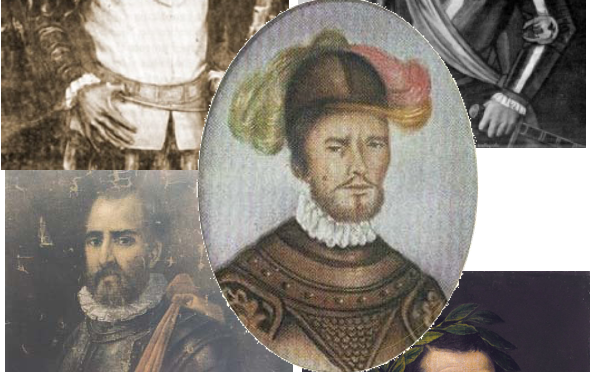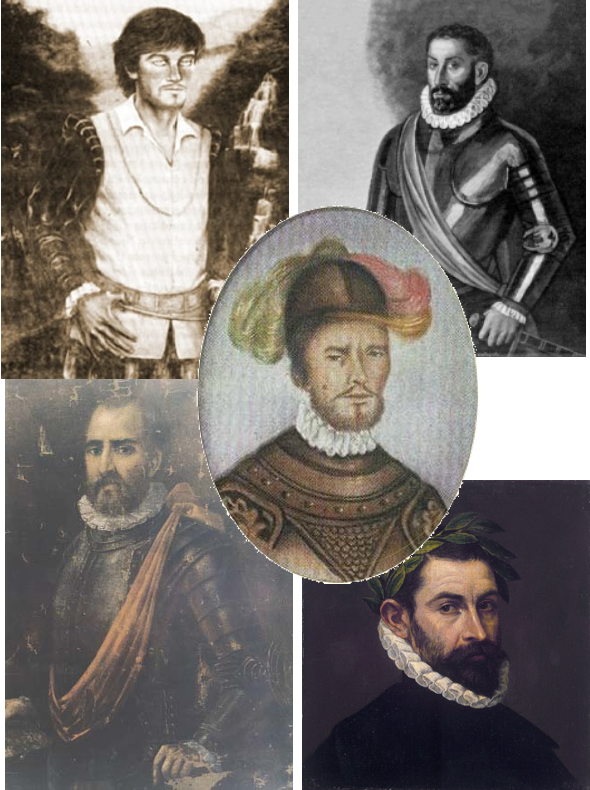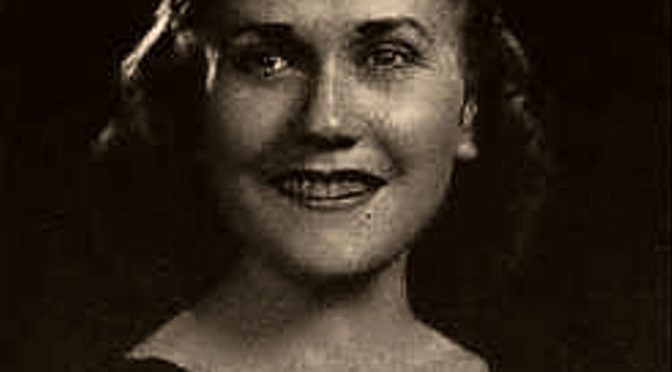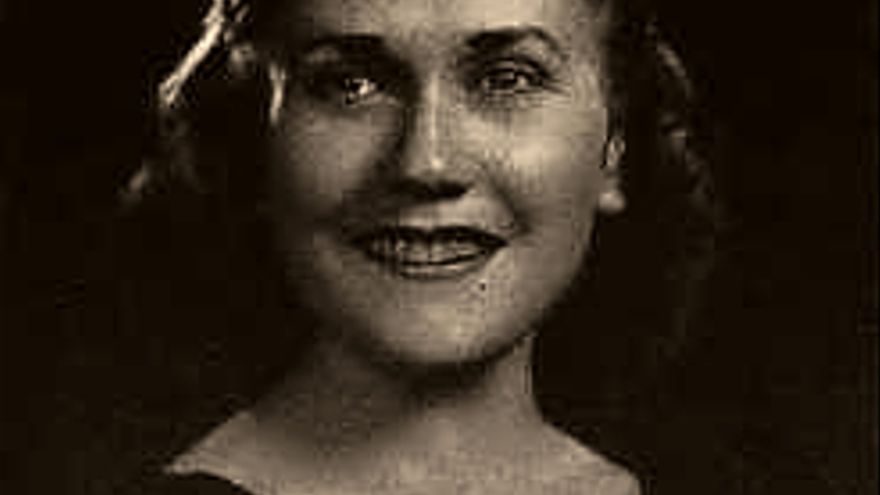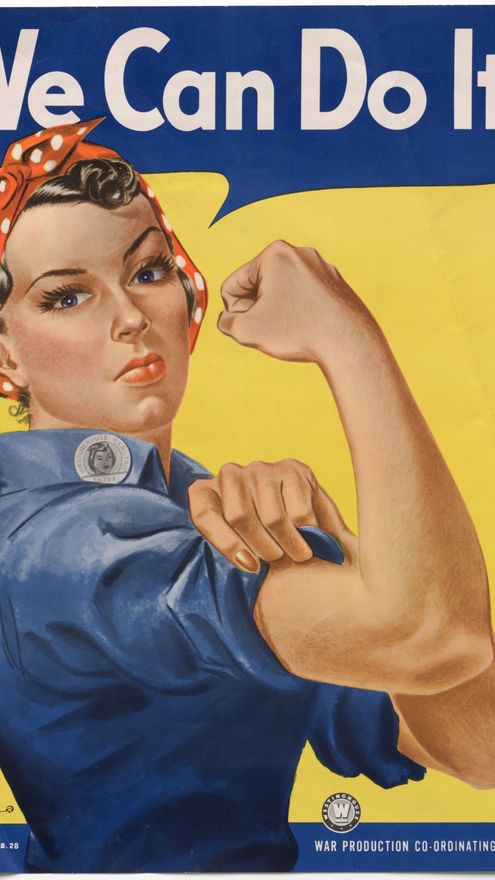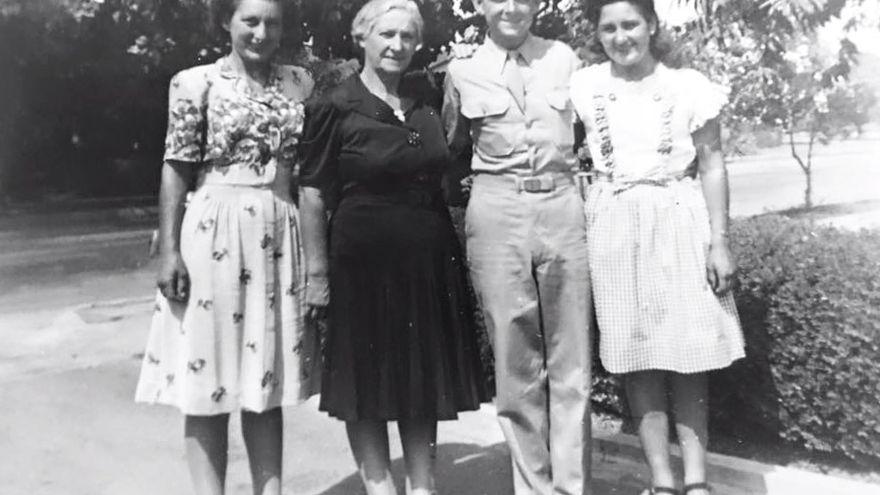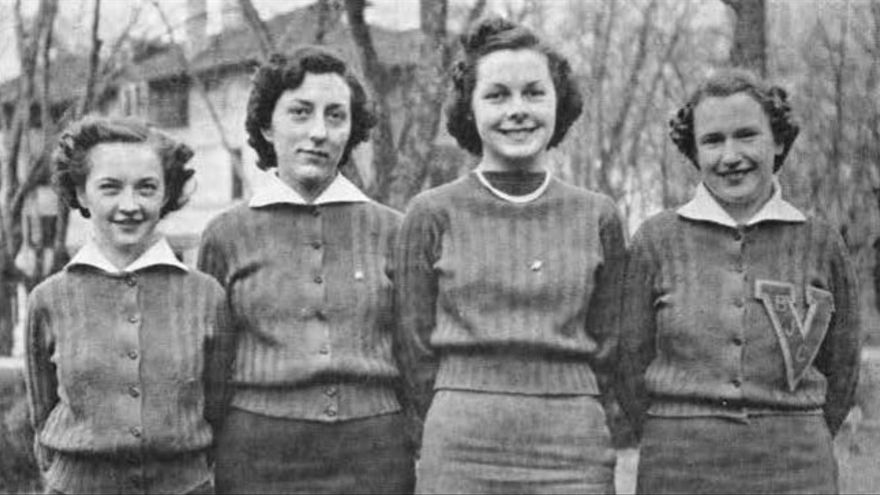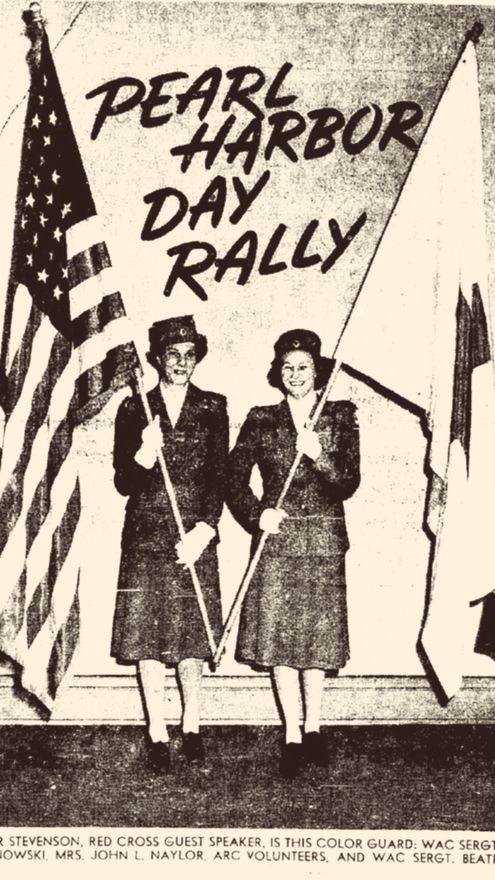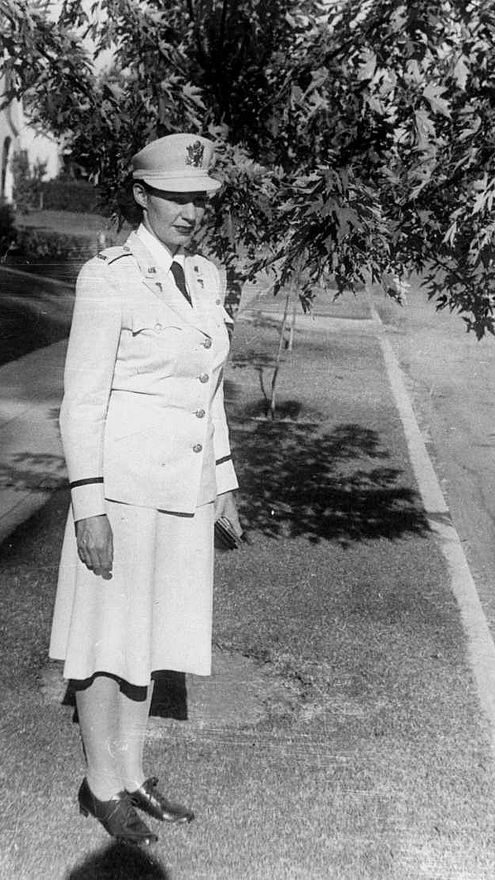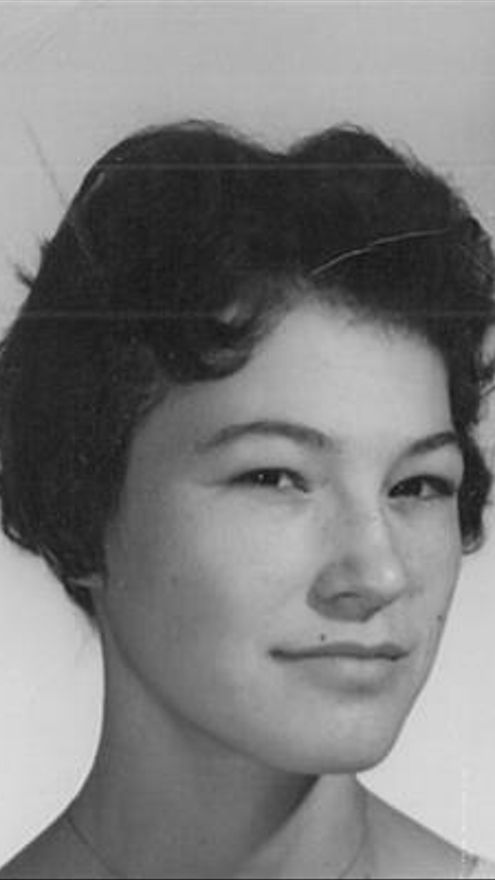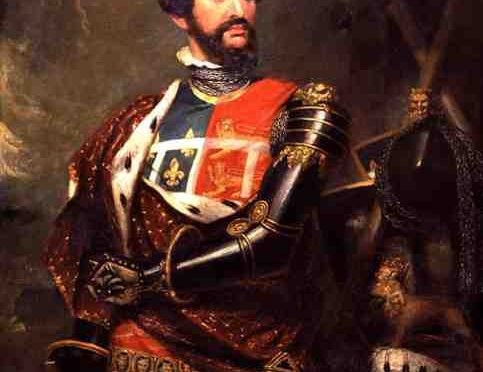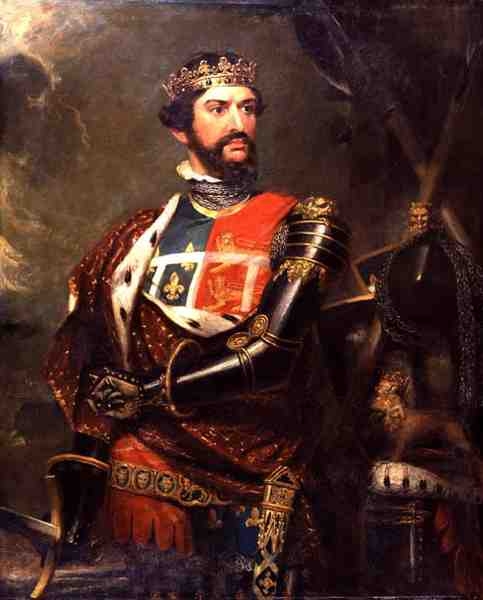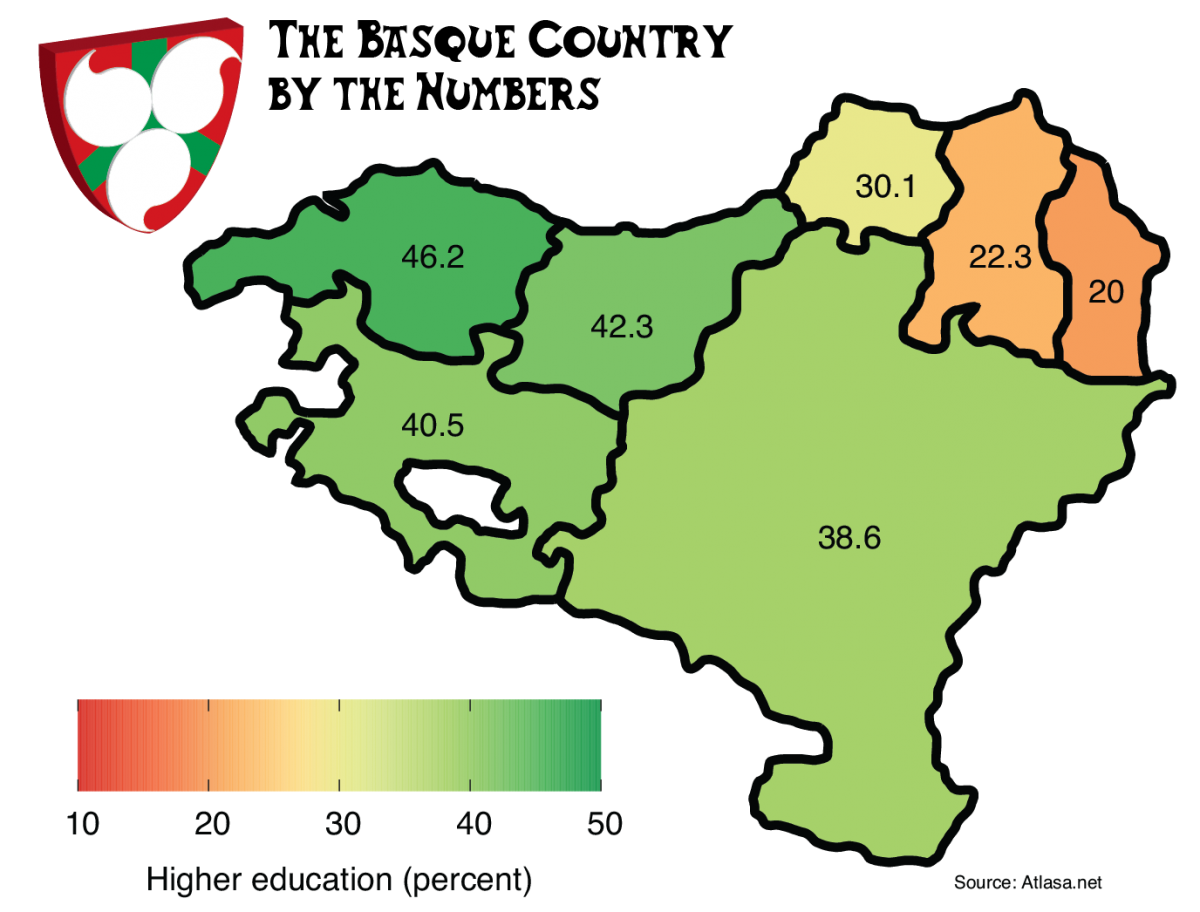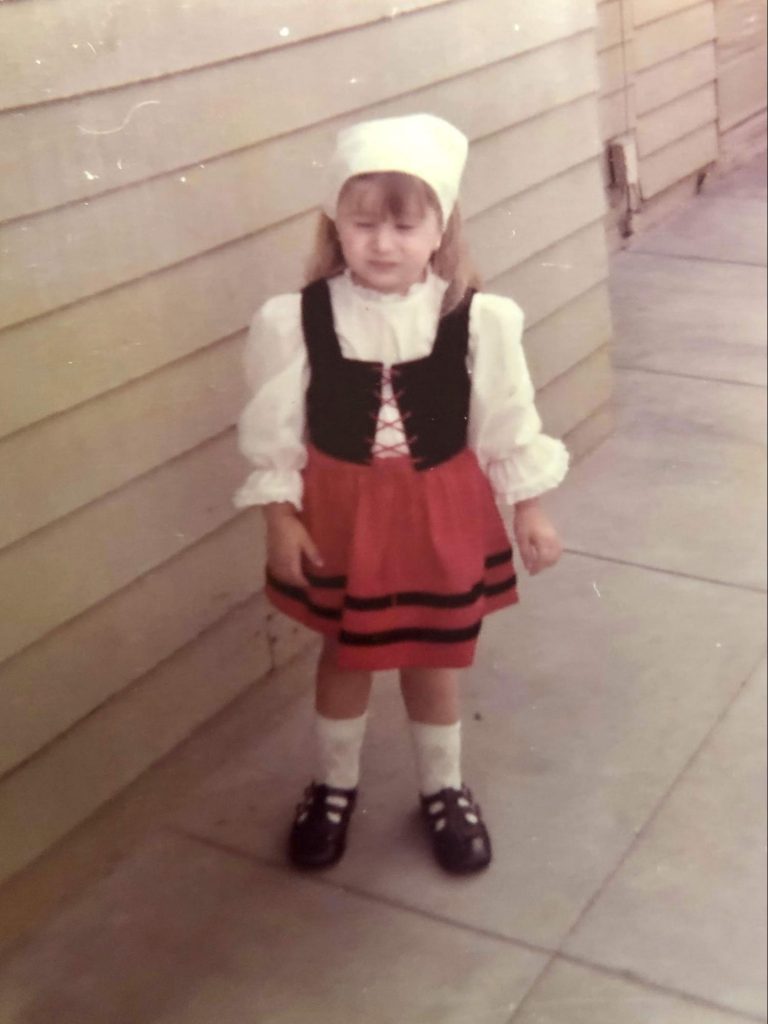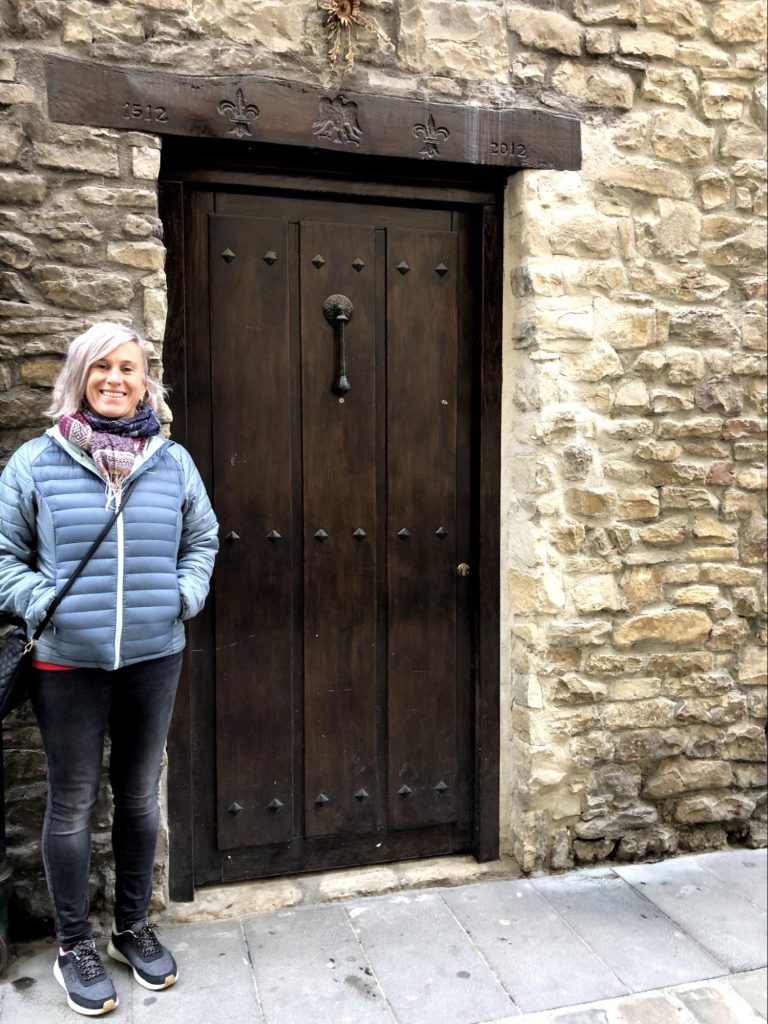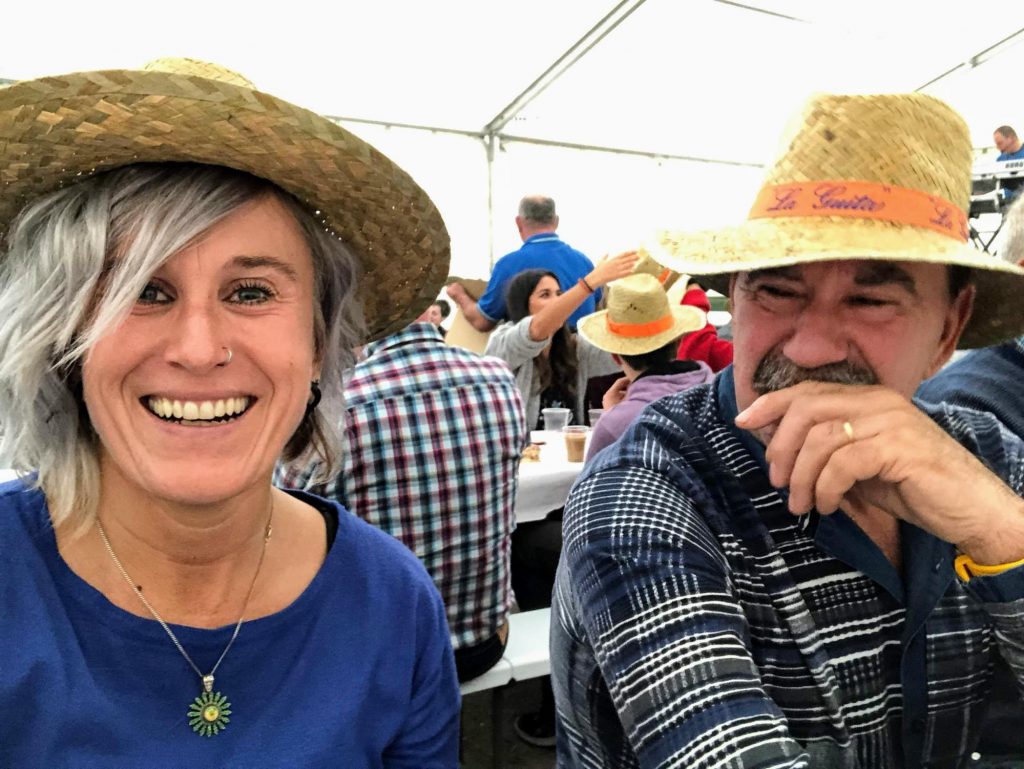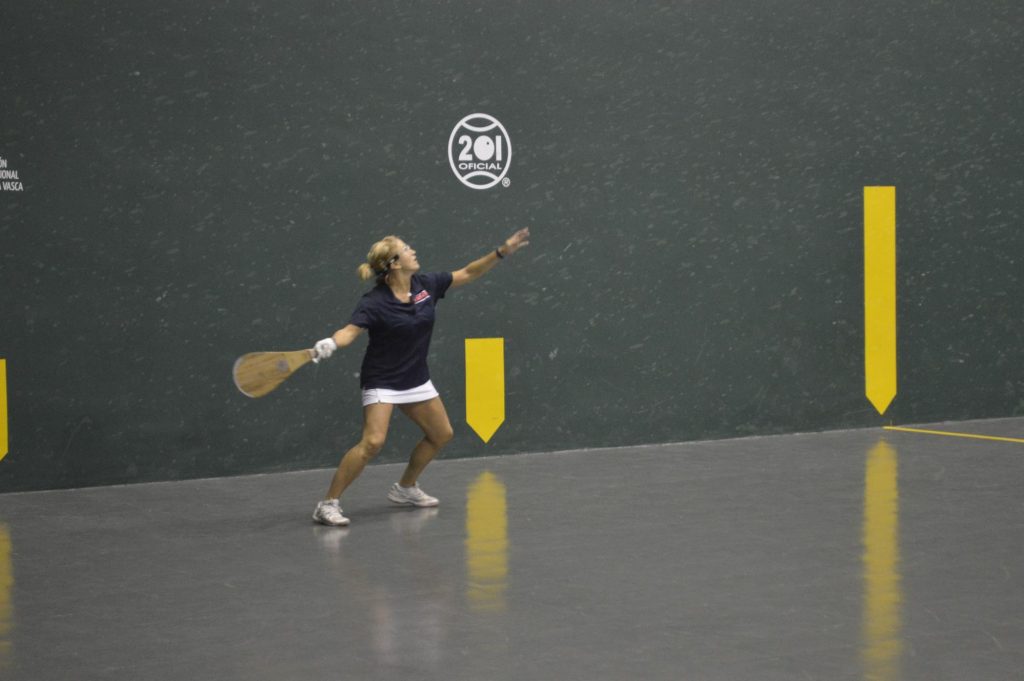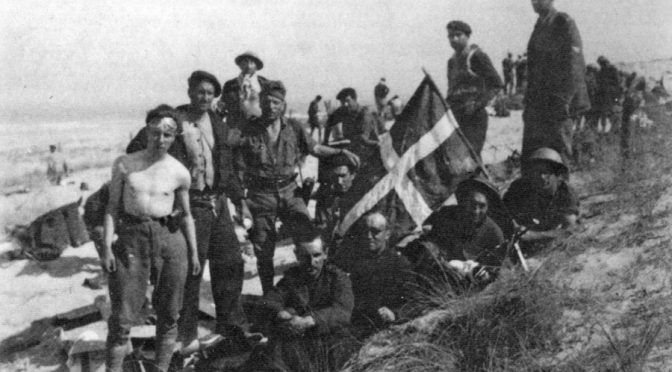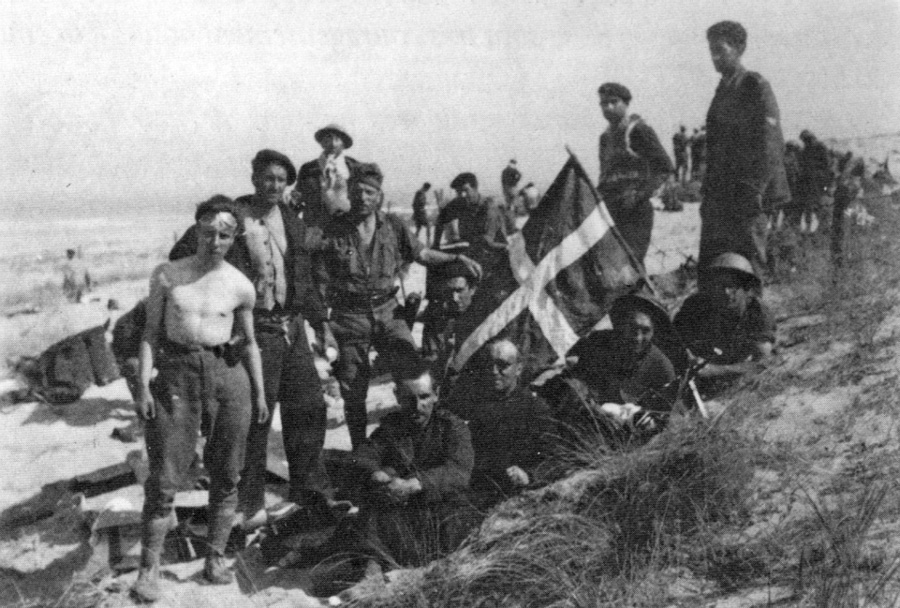Esther Ciganda doesn’t wait. She doesn’t ask what if. Instead, she makes things happen. Whether that is being Team Leader for Team USA Basque Pelota or fulfilling life-long dreams of moving to the Basque Country and learning Euskara, Esther makes her dreams come true. And, now, she wants to help others do the same by making learning Euskara that much easier via her new online Euskara school. I sat down virtually with Esther to talk to her about fulfilling dreams.
Buber’s Basque Page: Your parents both immigrated to the United States from the Basque Country. How did growing up in such a strong Basque home impact you as a child?
Esther Ciganda: As a child, I learned that I had to balance “two lives.” I had to be & act a certain way at home. We used Spanish as the home language since both my parents know Spanish. (Dad speaks Basque and mom doesn’t). I learned different cultural mannerisms.
For example, how you eat with both hands on the table (big no-no to have one hand under the table).
Even the way we learned math at school was different from how my parents learned so I’d hear them say I’m doing it wrong but the teacher would tell me a different way. (What mental confusion that I didn’t learn about until I was teaching Biology & Chemistry and I went to a summer training course where they talked to us about being aware that our students from different backgrounds may do math differently…WHAT? AH HA, what an AH HA moment that was to realize that’s what had happened to us at home.)
Esther was born in Washington State to immigrant parents from Navarra, Spain, where she grew up learning Spanish at home and English at school. She was driven to learn Basque because first it’d been forbidden to learn by her mom and because her dad along with all his family spoke Basque. Her biggest regret is not taking French in HS when her dad told her to. She thought with so many science classes, she’d rather go after the easy grade in Spanish. Little did she know that 20+ years later she’d be living in France and learning French on her own.
For 16 years, Esther was a high school teacher in the USA where she taught Biology, Chemistry, Health, Physical Science, Spanish, ASB Leadership, and Link Crew. She also coached Science Olympiad, soccer, and track & field. In 2013, she was given the World Language Teacher of the Year in the state of Idaho. An amazing honor she says continues to push her to be the best teacher for her students! Since 2014, she’s been teaching English in Spain. This brought on a change of not only a new subject, English, but also teaching elementary students through adults. After 22 years of classroom teaching, she decided to take on a new challenge in 2020 and take her skills to the online scene. The adventure has just started for Esther and she’s excited to see where it goes. She’s also one of the leaders of the United States Federation of Pelota. She’s been fortunate to not only play in several World Cup tournaments, but also serve as the Team Leader for Pelota Vasca in two Pan American Games.
When not working hard to develop lessons, you can find Esther taking breaks to go Basque in the sun, to work-out or play sports, to read books, to go on hikes, and Face-timing her two nieces. Basically, she hardly ever stops to breathe except to meditate and practice gratitude.
What was also different from others was that we butchered lambs at home, utilized everything from the lamb (none of my “American” friends understood.) Also the staple garden vegetable…garlic, leeks, peppers every year they planted rows and rows. 🙂
Getting the opportunity to travel to the Basque Country so many times helped solidify who my family was. It wasn’t just living the immigrant perspective away from the “Old County,” it was getting to go back and interact and see how I could easily relate to my whole family in the Basque Country. We may have been “the Americans,” but we were also raised as being from there as well.
BBP: What struck you the most during those visits to the Basque Country? What made it feel like home?
Esther Ciganda: First, for me, how much family we had there to visit. As a kid, I realized that in the States we didn’t have anyone from my dad’s side whereas my mom had several uncles that had come over as sheepherders and had stayed. So when we’d go, it was nice to have cousins to connect with, and spend time with aunts, uncles and my amatxi (my grandma on my dad’s side, the other 3 passed away when I was too young to remember). I made lots of friends and it was easy to connect with them since life experiences were similar in upbringing.
I’m grateful that my parents did teach us Spanish at least. Even though some cousins had to switch from Basque to Spanish, the majority were brought up with Spanish so we had no problem with language. Having the language was the key to maintaining connections with everyone and feeling at home.
The only odd thing was that even though we were ALWAYS welcome I did feel a disconnect since we weren’t around every year. They made us feel very special! But they also emphasized the Americans are here, but I was content with being introduced as Esther, our cousin, niece, etc., not being introduced as Esther the American, and then our cousin, friend, etc. Just something that stood out to me.
BBP: Has how you keep in touch with family different now from when you were younger? I mean, with new technologies like cell phones and the internet, how has that changed your relationship with your family, either in the Basque Country or, now that you live there, with your family back in the US?
Esther Ciganda: I remember, growing up, my mom and her sisters would write letters to each other. Basically they got news once a month. My dad would phone his mom and his siblings for important dates.
Technology… it’s what has helped solidify our relationship with our family. First, it started with Facebook. The cousins got on that and we connected with each other. Then with everyone having cell phones it became the use of WhatsApp. We have WhatsApp groups, one for each side of the family. It’s a great way to keep in touch with the latest news, dates about things, pictures, etc. Back when we were younger, it seemed we were the only ones who took pictures on our trips there. Now, everyone has cell phones and shares pictures. I also showed my uncles how they could do video calls to talk to my dad. I love it when they do WhatsApp video calls. My dad will also say, send this song to tío Macario, his brother, anytime he hears an oldie but goodie country song.
My presence there also helps to make sure that, in this fast-paced world that we all live in, we keep up our relationships.
My uncle & aunt came with me to the US for Christmas a few years ago. If they had to do it alone, I’m sure it would’ve never happened.
My dad & mom also went to the Basque region two years ago to celebrate San Martin in Auza, Navarra. It’s the festival in his town that I go to every year. I love it there (it’s small) and I eat lunch with my uncle and all of my dad’s old friends. With me going, they all kept asking him to go. So since the corn harvest finished literally a week before the festival, they called me and said book them tickets.
This past Christmas (2019), my brother & his family and my parents went to the Basque region. We celebrated Christmas with my mom’s side and New Year’s Eve with my dad’s. Amazing memories!
BBP: You’ve reversed the direction and have yourself moved to the Basque Country. What motivated your move? What has been the hardest part of adapting to a new home? What has been the biggest surprise?
Esther Ciganda: First, I was driven to learn Basque since I was a little girl. I had heard my dad speak it on the phone to his mother. We’d also go to Basque festivals and he would speak to different Basque guys in Basque. I didn’t like being left out of the conversation. Then when we’d go visit my amatxi, my dad’s mom, she had mentioned several times to me, “it’s a shame that your dad didn’t teach you Basque.”
It was engraved in my head, I wanted to learn Basque. I tried on my own using resources I’d come across on your blog. But learning on my own at home and being a 1st year teacher working on my master’s was difficult. Then in 2007 I moved to Boise (not Euskal Herria but 2nd best choice). I started playing Basque Pelota and in 2010 got to travel to Pau, France for the world championships as a sub. I knew then… my two childhood dreams had been neglected… to move to the Basque Country and to learn Basque. Immediately upon returning to Boise, I went to The Basque Museum and started taking Basque classes. I also made plans to go spend my summer in Lazkao, at Maizpide, and do an intensive summer program of 2 months. I did that for several summers from 2011 to 2014, a total of only 6 months across those summers.
While in Pau in 2010 and afterwards in Durango, Bizkaia for another tournament, I made a plan… I would move when I turned 40 (and if I had nothing holding me back like a relationship or kids). So 2014 came and I had to make a big move… ask my school for a year off and tell my parents!
The hardest part… tell my parents, and the 2nd tell my school (my principal had always feared that I would leave Capital).
That summer before moving was busy… spent the summer studying in Lazkao. Looked for places to live… I wanted a coastal place since I’ve been on a farm for the majority of my life. I didn’t find anything and had to return to Boise to pack. Also in September headed to Toluca, Mexico for the World Championships of Pelota to play with my partner from Bakersfield.
While in Boise and before Mexico, with our Basque connections, I found a place in Hendaia, France. Now came the 3rd hardest thing, I didn’t know French! Well, the place was affordable, I didn’t have other options I could afford especially to live on my own, so chose this place and still am in the same one 6 years later.
Before leaving Lazkao in the summer of 2014 to return to Boise, I had also found a job teaching English there. All the pieces were falling into place.
The hardest part was dealing with Spanish bureaucracy [Esther points to this video to get a sense of what she went through] to get all my paperwork in order even though I have Spanish citizenship. I also didn’t know what to do the first 2 years since technically I was living in France and not in Spain where I was working. Randomly ran into a guy at the beach who stopped to ask what time it was in Basque, we ended up chatting. He was from Gipuzkoa and was living in Hendaia with his girlfriend. He told me what I needed to do to be completely “legal” as a “transfronteriza” (border town worker in the EU). Again, the hardest part was the Spanish bureaucracy. Overall, it’s been interesting to just see how different governments do things and the pros and cons.
Well, 6 years later, I’m still enjoying the ride. There are things I miss in the states… my parents, the farm, my brother and his family, my friends in Moses Lake, Boise and college friends. However, I like facing challenges and difficulties; then working hard to learn to solve any problems that arise. I think that’s been one of my biggest surprises about myself that I didn’t realize. As far as surprises in the Basque Country, the fact that for such a small region and that us American Basques tend to move about more within the Basque region than those that live there. They also find it so different how as Americans we don’t fear moving far away from home.
BBP: I’m always struck by the different perspectives of different people. When I told my dad I was going to the Basque Country to learn Basque, he asked why, when Spanish was so much more widely spoken.
Esther Ciganda: Agree with what you said here. As a kid, I remember asking my dad several times to teach me Basque and his answer would be, “In this country (the US) you only need to know 2 languages, English and Spanish. With those two languages, you can go anywhere. With Basque, you can go to the Basque region and even there it was limited” (especially during the late 70s and early 80s).
Also, how many Basques around the world? Thousands, think in all of the Americas. What must have all these people been thinking? What was their WHY?
BBP: Clearly, you have a passion for the Basque language, and that has taken real form with the online Basque course you are developing. You also have an obvious passion for teaching. How did they converge into creating this course?
Esther Ciganda: Yeah…teaching! I remember as a little kid grabbing my parents English grammar books that they had to learn English. I used those on my brother and I would play teacher with him a lot. I had been teaching in one form or another through HS and at WSU, I was even asked to be a Chemistry Lab TA to teach at WSU (a position usually reserved for grad students). What an honor and recognition from my professors, but I didn’t realize I wanted to teach. I wanted to be a doctor ’til literally a month before graduating from WSU in Biology that I decided that I wanted to teach.
Fast forward through this next part… became a multi-disciplinary teacher: a science teacher, a Spanish teacher and leadership. Then only a Spanish teacher, which reinforced more my love for languages, but still using what I knew by relating language learning to a formula for those science-minded students like me.
When I started learning Basque, I never thought I’d be able to teach it. So in 2015, when the NABO Basque coordinator asked if I’d be interested I was shocked and honored.
Then, while living in the Basque region and teaching English I’ve had time to explore the online world while talking to many of my English teacher colleagues. They want to learn Basque and they talk about not having the time or also it being difficult since they don’t have the best understanding of Spanish either. They’ve asked me about resources with English explanations, etc. That got me thinking about a new opportunity for me… continuing to teach, helping bring Basque to immigrants/Expats in the Basque region and to all the English-speaking Basques or language lovers in the World.
But what a mind-shift for me, the teaching part is not difficult but how to create digital courses that will benefit people, that they will want to finish them, continue to learn and eventually travel there to use the language. I’ve had to learn about the business aspect of what I’m trying to do. Yes, I build relationships with students and people daily, but how to find people like me that have wanted to learn Basque their whole life, but not just with a book.
That’s what I’m trying to create… self-study, with a group component for people to talk to each other and provide office hours weekly where we can connect and I can help to answer their questions or practice with them.
BBP: Where do you hope your course will go? Where do you see it in five or ten years?
Esther Ciganda: I hope it will be something that grows with time and continues to help out people stay connected to their roots or people who love learning languages come to learn this isolate language. I also see possibly a membership program where people can enroll monthly and be part of the ongoing course and all the resources can be found in one spot.
BBP: Starting a digital course to teach English speakers Basques seems like a daunting undertaking that, as you mention, involves not only the language, but more mundane aspects like developing websites and business aspects of creating something new like this. What has been the most surprising aspect of this endeavor? Where do you hope it will all lead?
Esther Ciganda: Great questions Blas! The most surprising aspect is enjoying all the things not related to teaching. Teaching is my love and I love helping others. However, the business aspect was where I was clueless. I enjoyed making my website; no actually I loved it! I feel the sense that I may create something in the future to help teachers to create their own website. I still have to learn a lot, but to get something simple and classy ready I can now do.
My brain is also spinning because I love teaching languages. I want to teach Basque and make it accessible to as many people as possible in the world. I also want to help teachers learn Spanish, I did that before as an after school gig while teaching in Moses Lake. Then I enjoy teaching English to non-English speakers as well. So, down the road I hope to create courses in these areas.
But what I’m also thinking about is the lack of resources for eduprenuers/teacherpreneurs in Spanish or Basque. In English, ohhh many different courses and summits, but not as many in other languages. That is an area that is silently tugging at me as well. How can I help other educators in other countries to create side hustles?
I’m a dreamer and a go-getter with a lot of patience. I will continue to see where all this new learning will take me. For the moment though, my focus is on building courses to learn Basque.
BBP: How do you think a science background changes how you think about learning and teaching language?
Esther Ciganda: In the classroom, we were taught to focus on the different learning styles. I’m scientific and logical in my thinking with a creative brain that’s usually buried and hidden. I have to branch out of my comfort zone at times to relate to the students who think differently than me. I get to know my students so I know which ones like certain styles and which prefer something different.
So when I teach languages I use the approaches that will help my students. For some, I explain things in very simple terms and possibly use pictures or diagrams. With those who like math and science, I tend to relate grammar topics that pop up as formulas. Many times it’s these students who like to do grammar and hate to do writings. (Yup, just like me.) Yet, I know the importance of being able to use the language and not fill in grammar worksheets.
I’ll emphasize how listening to music and or watching shows will help develop their listening skills and build vocabulary. I see my young students in Donostia/San Sebastian and they usually “know” and “can” sing the songs to what’s popular in the US. How do they do that without studying? Repetition! Experimentation… do, say, listen, repeat, etc.
BBP: As a chemistry major, I guess you know that the element tungsten was discovered by a pair of Basque brothers, the Elhuyars. I always wonder what they might have named the element if elements had been named by the discoverers, as they are now.
Esther Ciganda: Yes, I remember and when I use the Elhuyar dictionary I’ve wondered if it’s connected to them. I wonder what they would have named it and what would have been its chemical symbol. Basques and their connection to earth and some lifting heavy stones; quite appropriate that Tungsten means heavy stone or something like that, but the symbol W always confused me and then my students. I wondered why they called it Wolfram instead of a Basque name.
BBP: Do you have a favorite Basque word? What is something that you find particularly interesting about the language?
Esther Ciganda: Not one specifically that I can think of, but I have a phrase that I love. I heard it from my friend in Iparralde. When someone sneezes you say, “Ehun urtez!” and they should respond, “eta zu kontalari.”
I find it interesting how in such a small geographical area that you can find such variation in the way you pronounce words. For example, how is it that ukan, its conjugations, can vary so much? In Gipuzkoa you’ll hear dut pronounced as det. In Bizkaia, they’ll say dot. For izan, the form for “I am” is naiz but in Zuberoa they’ll say niz and in Bizkaia naz. Even the days of the week: Saturday in Bizkaia is Zapatua and in Zuberoa it’s Neskenegüna.
BBP: You mentioned pelota and I’ve seen you’ve had a successful career as a pilotari. How did you get into pelota? Was there something about the sport that was particularly interesting to you?
Esther Ciganda: As a little girl, I fell in love with all sports and can go on and on. My dad would talk about how they played handball in the old country and then we’d hear about a match in the Basque Country and a family friend of ours living near us, also Basque, would catch games via his satellite or something. I don’t quite remember. So, I always had it set in my mind that if I had a chance I wanted to play.
When I moved to Boise, what was one of my first questions? How can I get started playing? I started playing on the B-league with guys using the bigger/heavier pala which many girls also use to play in the Basque Country. We also had a meeting to use scholarship money from the Cenarrusa Foundation to buy equipment either for kids or for women.
We had so many women interested that it was an easy vote. The women’s program was re-started in 2007, and we ended up one year with over 40 ladies playing. I still played with the guys and a few other ladies also started playing in the B-league and I played in the women’s league, where we used paddles from Argentina and the variation of this sport is known as Paleta Argentina or Baleen. I would train during the week in the evenings and then play games twice a week. Like I said, I love sports, but what appealed to me was that it was a sport directly tied to my culture.
I’m fortunate to have moved to Boise because that one decision allowed me to play the sport locally, then in national N.A.B.O. tournaments and World Tournaments. I’ve had amazing experiences due to the sport including being the Team Leader for Team USA Basque Pelota at the PanAm Games in Guadalajara, Mexico and Lima, Peru. I will continue to help out with the US Federation of Pelota to grow our numbers and especially focus on getting our women competitive enough to qualify for the World Championships and the PanAmerican Games.
BBP: Last question! What would you say to all of those who dream of learning Basque someday?
Esther Ciganda: I’d ask, what are you waiting for? Don’t listen to those who say “it’s too hard.” I always had heard it was so hard, but when I started learning the language I realized you just needed to have a different mindset for Euskara than for English or Spanish. Grammatically yes, it’s different, but not impossible. If you are passionate about learning Basque, go for it. If you’ve been wanting to learn it, don’t let anything stop you from doing it.
Share this / Partekatu hau:
Like this:
Like Loading...




